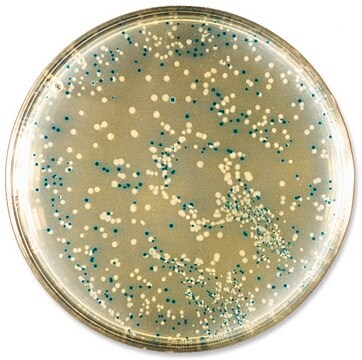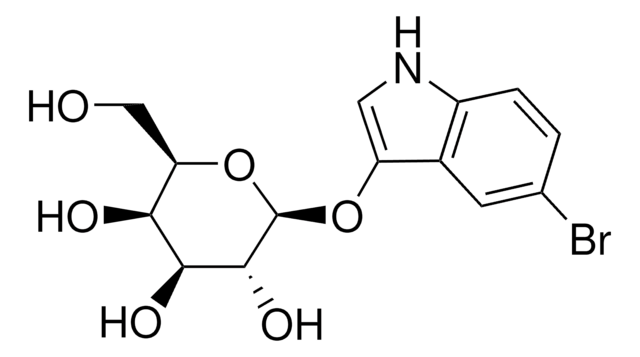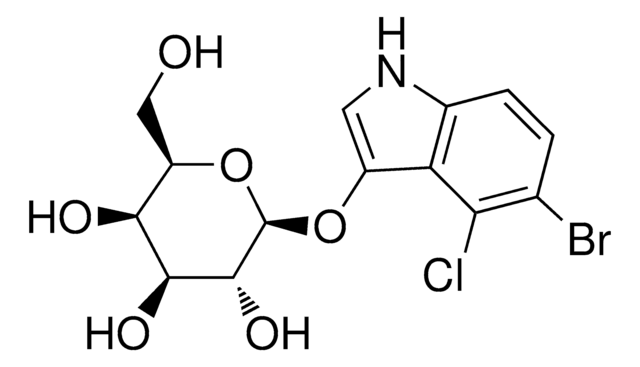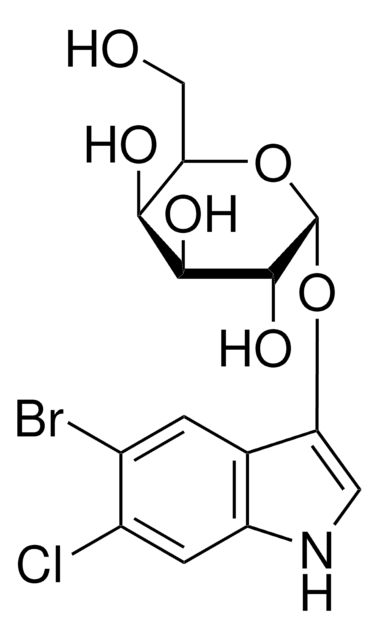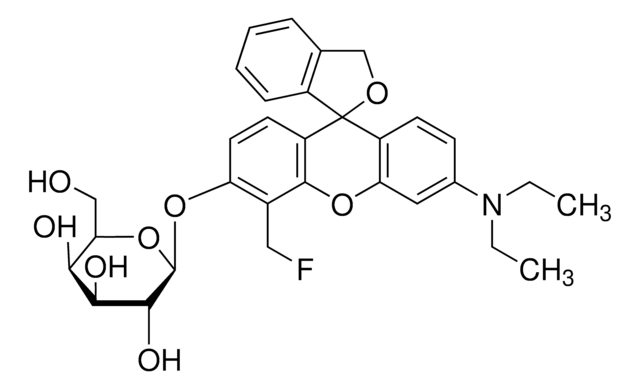S9811
S-Gal®
reagent for selection of recombinant bacterial clones
Synonym(s):
3,4-Cyclohexenoesculetin β-D-galactopyranoside
About This Item
Recommended Products
grade
for molecular biology
Quality Level
sterility
non-sterile
Assay
≥95% (HPLC)
form
powder
solubility
DMF: 50 mg/mL
suitability
suitable for β-galactosidase test
storage temp.
room temp
SMILES string
OC[C@H]1O[C@@H](Oc2cc3OC(=O)C4=C(CCCC4)c3cc2O)[C@H](O)[C@@H](O)[C@H]1O
InChI
1S/C19H22O9/c20-7-14-15(22)16(23)17(24)19(28-14)27-13-6-12-10(5-11(13)21)8-3-1-2-4-9(8)18(25)26-12/h5-6,14-17,19-24H,1-4,7H2/t14-,15+,16+,17-,19-/m1/s1
InChI key
HDJJDRXZHJRVGA-DIKXUDHVSA-N
General description
Application
Features and Benefits
- More intense color contrast than X-gal
- Excellent for use in automated colony counters
- Autoclavable for easiest use
- No need to make stock solutions
Other Notes
formulation. A medium prepared with S-Gal® is moderately dark due to the presence of ferric ammonium citrate. This darker background often provides enhanced contrast for automated colony counting or isolation.
Principle
Reconstitution
Legal Information
related product
Signal Word
Warning
Hazard Statements
Precautionary Statements
Hazard Classifications
Eye Irrit. 2 - Skin Irrit. 2 - STOT SE 3
Target Organs
Respiratory system
Storage Class Code
11 - Combustible Solids
WGK
WGK 3
Flash Point(F)
Not applicable
Flash Point(C)
Not applicable
Personal Protective Equipment
Certificates of Analysis (COA)
Search for Certificates of Analysis (COA) by entering the products Lot/Batch Number. Lot and Batch Numbers can be found on a product’s label following the words ‘Lot’ or ‘Batch’.
Already Own This Product?
Find documentation for the products that you have recently purchased in the Document Library.
Articles
General protocols for growth of competent cells and their transformation (uptake of DNA).
Protocols
Technical Article on competent cells. Transformation is a process by which some bacteria take up foreign genetic material (naked DNA) from the environment.
Our team of scientists has experience in all areas of research including Life Science, Material Science, Chemical Synthesis, Chromatography, Analytical and many others.
Contact Technical Service